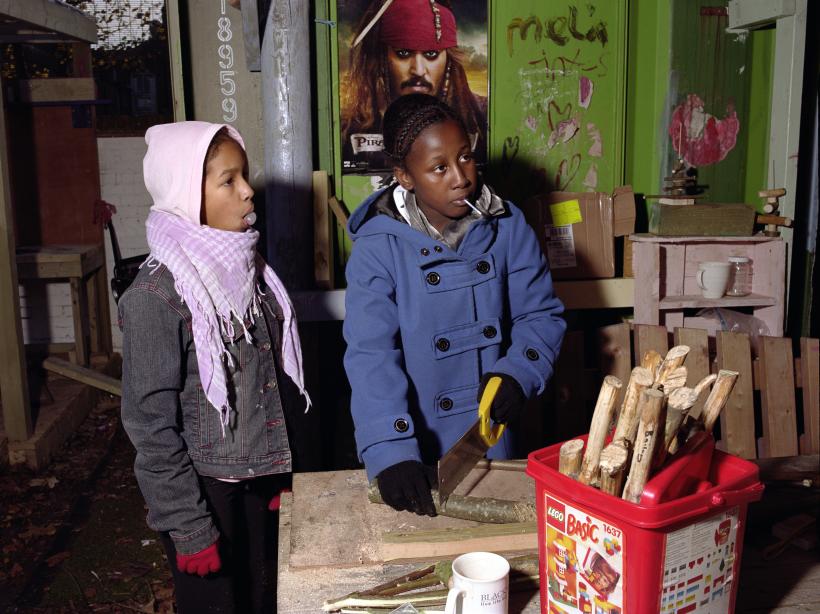The Foundling Museum’s ‘Child’s Play’ by Mark Neville is a photography exhibition which inhabits that grey, often elusive space between contemporary art, documentary photography and political activism. The project aims to focus attention on attitudes towards play in the UK by bringing together a book, a symposium and this exhibition which presents images of children playing set against a number of vastly contrasting backdrops around the world.
On the one hand, we have images from far flung cultures and remote climes. A child is pictured eating Chewits and wearing a santa hat in the desert, accompanied by two men grappling with the carcass of a sacrificial goat. This Christmas day snapshot is as grim as it is festive, as foreign as it is familiar and provides an astonishing juxtaposition of what we know and what we don’t, presenting much loved celebrations in the context of a scene which seems utterly alien. Other photographs were taken in girls’ schools in Afghanistan, war zones in Ukraine and the homes of native Canadians, each marked by the continuity of the ‘child’s play’ theme. Neville told me that he became extremely close with the communities he visited, and the images share a subsequent intimacy and a certain frankness which would surely not otherwise be present.
Closer to home, three boys are photographed backstage during a school production of ‘The Jungle Book’, involved in what the artist sees as “some intense, conspiratorial gameplay, unrelated to the other, structured school play for which they are costumed.” This goes to show the many different dynamics at work within the show. As much as there are pointed contrasts between separate images and sections of the exhibition, these micro offsets are present within many of the individual photographs, and such minutiae lend depth to the production as a whole. Moreover, the subjects themselves provide a refreshingly un-choreographed vitality to the shots. Arguments, games and friends are won and lost within the many worlds the photographs conjure up, while others provoke empathy and pity at the worries, loneliness and idle daydreams they narrate.
The setting of the show is acutely relevant too; the Foundling Museum tells the story of the Foundling Hospital, Britain’s first home for abandoned children. The hospital itself was at a different site which has now – somewhat pertinently – been turned into a playground, but this institution has a rich history of art and music. Handel was an early benefactor, having his most enduring work, the ‘Messiah’, performed on site numerous times, while the likes of Hogarth and Thomas Gainsborough were high profile supporters, both financially and politically, from the 18th century art world. Neville’s own political and artistic contribution is the latest addition to this legacy, and the work is hard-hitting, candid and tender in equal measure. In both this fitting exhibition space and these uncertain times, it is a piercing and surprisingly universal collection of images.





